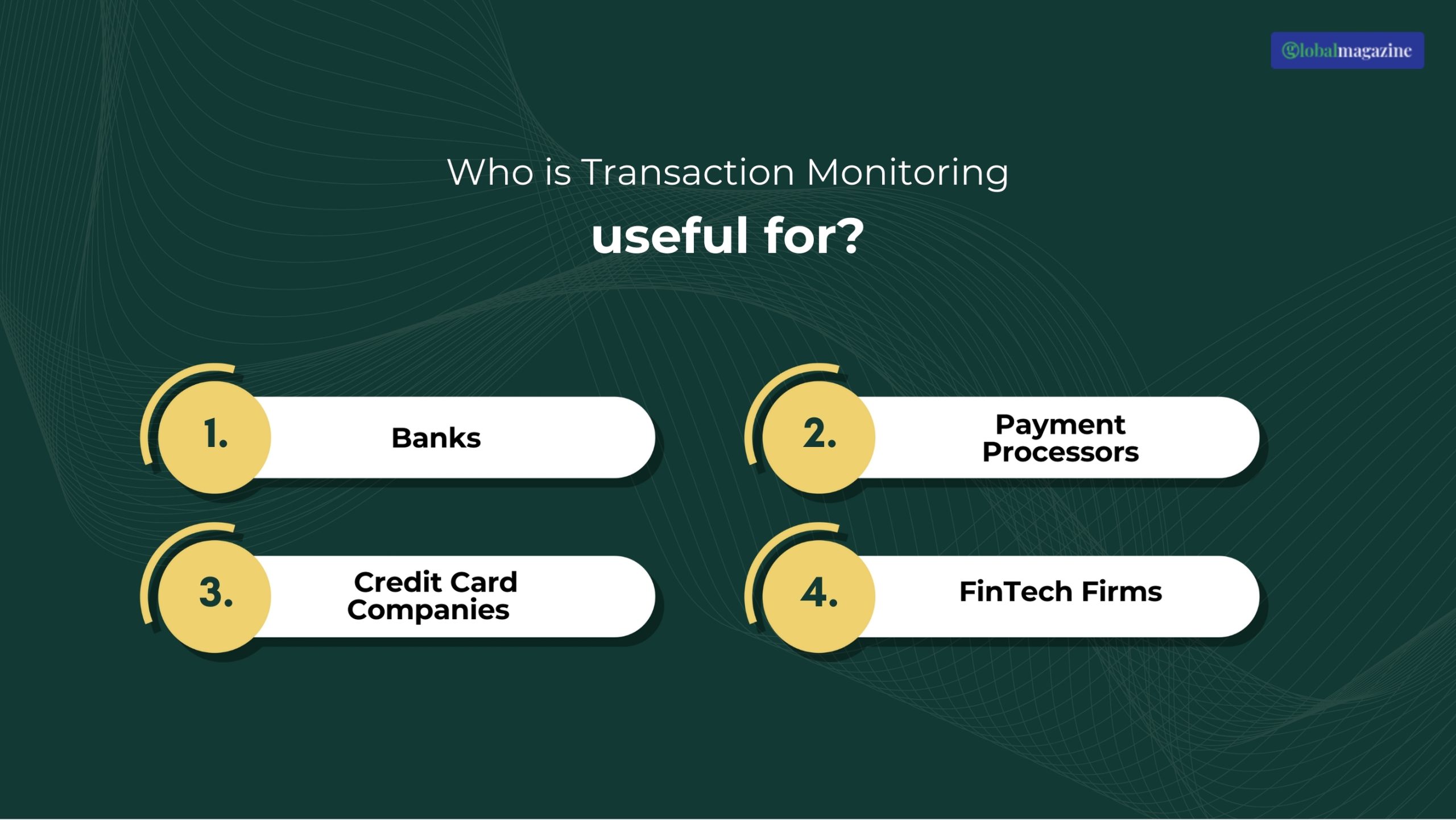Transaction Monitoring: Your ULTIMATE Way to Prevent Fraudulent Activity?

Transaction monitoring analyzes, tracks, and assesses financial transactions after they occur or even in real time. The primary purpose of this process is to detect suspicious or unusual activity that can indicate fraud.
The process is one of the main components of financial institution compliance as it allows them to meet anti-money laundering (AML) and regulatory standards. Moreover, it is one of the critical processes that help protect market integrity, among other things.
The following article dives into the process and looks at how it helps protect the consumer and the company from fraudulent activities.
What is Transaction Monitoring and Its Role in Preventing Fraud

We have a rudimentary idea of what is transaction monitoring from the above section, so let’s enrich our knowledge. For anyone in the Fintech sector or even in another corporate sector – we are constantly in touch with transactions – indirectly or directly, that help us conduct business.
If you are a regular news follower, you’d know how the number of fraudulent cases has steeply risen in the past few years. It is mostly someone from out of the system hacking into it and causing significant financial loss. And only a handful of people using the bank or other financial institution’s services commit fraud.
I want to highlight here that systems are prone to hacking, especially when no one is closely watching the transactions. The finance sector has learned a lesson from famous movies on money laundering and real-life cases across the globe.
That’s how we get the amalgamation of two worlds no one thought possible a decade or two ago. FinTech. If we get down to the primary activity of transaction monitoring, it is an employee manually stopping and interrogating every transaction a customer completes.
This may seem restrictive, but this is what stops fraudulent activity at the grassroots.
Let’s look at its contribution to preventing fraud:
- identifies suspicious activity/patterns that indicate illegal activities
- Flags unusual behavior such as sudden large transactions or frequent transfers to a high-risk customer
- Highlighting deviations from typical account activity helps financial institutions detect fraud early
- Real-time monitoring that quickly alerts about the risk and allows prompt investigation when necessary
These are all the basic ways it curbs fraud.
Rules Of Transaction Monitoring – What Triggers An Alert?
The transaction monitoring depends on specific rules that help determine which transactions to flag for review by the authorities. It is usually based on factors such as:
- Frequency of transactions
- Amount of these transactions
- Geographic location
- Account behavior
For instance, a bank may set a rule to flag any transaction amount above a certain amount or international transfers to regions that are “high-risk” according to them. They can even have rules for monitoring or flagging transactions with unusual patterns.
These rules adapt to the regulatory requirements and the risks that banks or FinTechs face. These regulatory requirements may be changes in the AML transaction monitoring standards.
Components of Transaction Monitoring
Here are the different components of transaction monitoring that make financial security possible:
- Data collection and analysis for real-time or periodic analysis
- Risk-based algorithms and rules that define what constitutes suspicious activity
- AML compliance tools that help ensure compliance with AML regulations, such as AML transaction monitoring
- Enterprise cybersecurity and risk management that integrates enterprise cybersecurity systems and risk management to protect financial data.
- Machine learning and AI where the process uses advanced technology to improve detection accuracy and adapt to the new threats as they occur.
How Does it Work?
A common question we often get asked is how does transaction monitoring work. As mentioned earlier it is a system of assessing transactions by applying rules, algorithms, and ML (machine learning) models that meet a few risk criteria.
The compliance team reviews the transactions that are flagged for further investigation. Due to the rapid advancements in technology and adaptation matching this evolution, this process has better tools.
Advanced systems such as AI help compliance teams adapt rules based on detected patterns. This makes transaction monitoring a dynamic and responsive process that evolves as new threats and regulations are encountered.
Challenges of Transaction Monitoring
Here are a few challenges of transaction monitoring that are often overlooked:
- False positives: A concern that may lead to customer dissatisfaction or probable legal issues, this one is important. Automated systems may generate false alerts which can be overwhelming.
- Data quality can suffer in transaction monitoring due to inaccurate or incomplete data which makes it difficult for the system to detect suspicious activity.
- Regulatory changes require financial institutions to regularly update their monitoring systems for complete compliance. This can be complex
- Difficult to strike a balance between accuracy and efficiency due to the thorough scrutiny for AML compliance. This may hinder swift legitimate transactions.
Why is it Important?
Transaction monitoring is important for fraud prevention (duh!) and regulatory compliance. Regulatory bodies require financial institutions to implement transaction monitoring that meets AML requirements. This is due to its direct support for tracking and preventing money laundering and financial crimes.
The process also protects financial institutions from:
- Reputational damage
- Legal penalties and
- Operational risks
Through proactive management and reduction of fraudulent activities.
What is AML Transaction Monitoring?

Anti-money laundering transaction monitoring is a self-explanatory process that detects and prevents those activities. In addition, this type of monitoring is a regulatory requirement for tracking transactions in financial institutions. This ensures they comply with the AML laws.
AML transaction monitoring allows institutions to detect suspicious activities such as structuring or layering. These are processes by which individuals try to evade detection by breaking large sums into smaller transactions.
Role of Transaction Monitoring in AML
The primary role of transaction monitoring in AML is quite clear hopefully from the above section. Here’s what it helps with:
- Automates detection of suspicious activities and generates reports for compliance teams
- Uses analytics and regulatory technology to support regulatory change management
- Allows them to adapt to evolving AML requirements
- Transaction monitoring systems help generate suspicious activity reports (SARs) as part of the regulatory compliance
Types of Transaction Monitoring
Here are the different types of transaction monitoring, each with different financial risks:
- Real-time monitoring that allows tracking transactions as they happen. It is useful for preventing fraud proactively.
- Post-event monitoring that compares payments to money laundering typologies helps identify patterns. It is one of the most used tools in less critical situations.
- Rules-based monitoring takes care of the transactions using predefined rules that help flag suspicious activities. These are based on regulatory requirements, risk factors, and known patterns of suspicious activity.
- Periodic monitoring is one of the most effective in preventing financial fraud as it analyzes historical transactional data of the customer to identify irregularities and patterns in their financial/transactional behavior
- Behavioral analytics use ML algorithms to analyze transactional behaviors and patterns over time. This helps identify anomalies
These types apply in situations, and financial institutions may even incorporate them in their monitoring process.
Who is Transaction Monitoring Useful for?

Well, if you conduct financial transactions, it is for you! A wide range of businesses – specifically those in the financial sector – require transaction monitoring in their system. A few names of these institutions include:
- Banks
- Payment processors
- Credit card companies
- FinTech firms
All of these institutions, among others, require this system in place. This helps them maintain compliance with the regulatory guidelines and prevent financial crimes.
Companies that offer business loans, other financial services platforms, and even those providing business tips and guidance to entrepreneurs from experience must employ transaction monitoring to ensure the security of those transactions.
Wrapping it Up!
That was all about transaction monitoring and making financial security a reality for financial institutions. The process involves using powerful tools that help manage and reduce financial crime risks. This is true when the system uses regulatory technology and risk management solutions.
The article includes transaction monitoring examples that help readers understand how innovative approaches can support compliance and protect institutions from financial threats.
Read More:
























